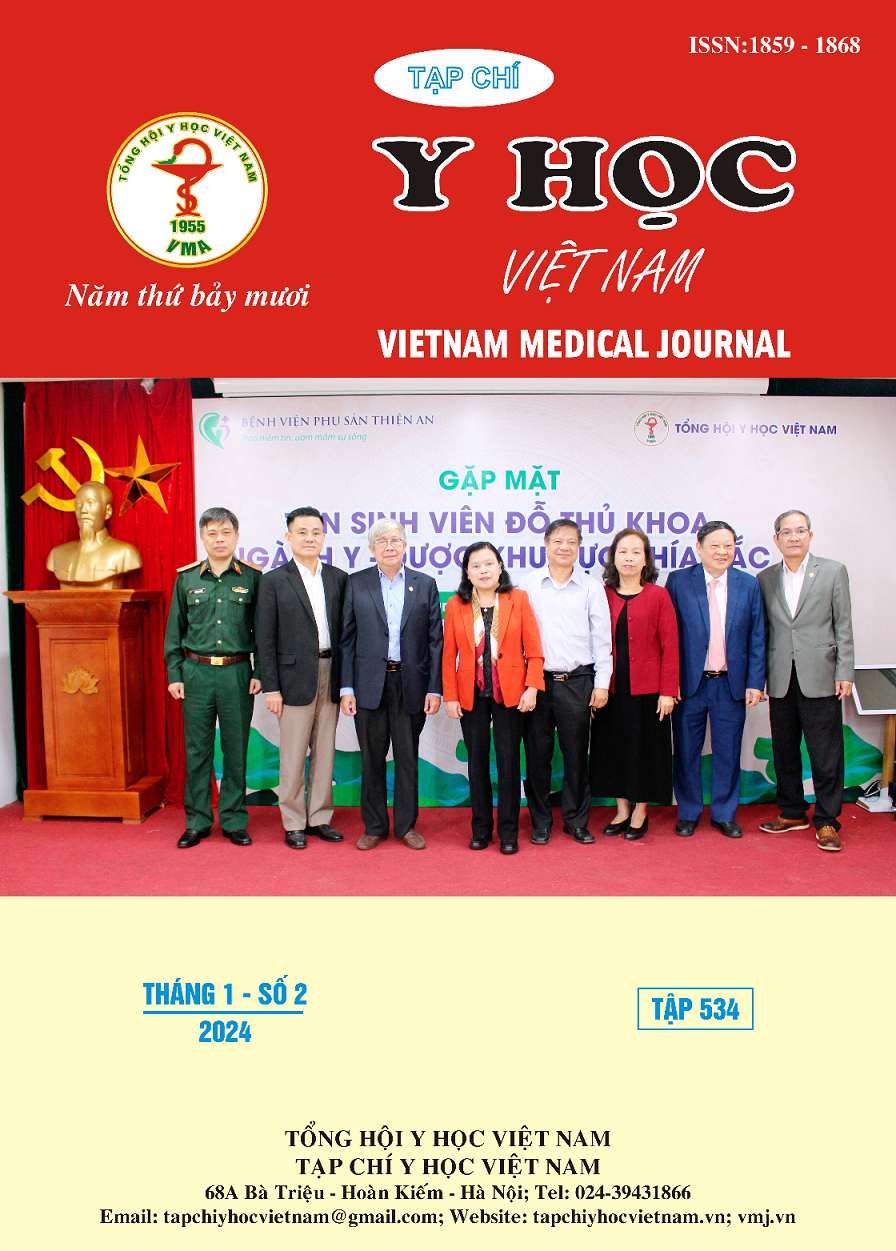CLINICAL FEATURES, MAGNETIC RESONANCE IMAGING OF CEREBRAL INHALTY IN PATIENTS WITH METABOLIC SYNDROME
Main Article Content
Abstract
Objective: The aim of this study is to describe the clinical characteristics and magnetic resonance imaging of ischemic stroke in patients with metabolic syndrome. And analyze the relationship between components of metabolic syndrome and ischemic stroke. Subjects and methods: This is a prospective, cross-sectional study of 105 patients with ischemic stroke who had metabolic syndrome treated at the Neurological Center at Bach Mai Hospital from November 2022 to June 2023. Results: The average age was 66.59 ± 11.61 years (range 35-104), and the majority of patients were 60 years old or older (74.3%). The male/female ratio was 1.76/1. Common symptoms were: hemiplegia (93.3%), central VII paralysis (78.1%), sensory disorders (41%), aphasia (40%), consciousness disorders (21.9%), and severe clinical severity according to the NIHSS scale ≥16 (31.4%). On cranial magnetic resonance imaging, the most common location of infarction is according to the dominant area of the carotid system (81.9%). The rate of multiple new foci accounts for (57.1%) and 41% of foci. Atherosclerotic stenosis of intracranial arteries is 49.5%, and atherosclerotic stenosis of extracranial arteries is 22.9%. Fasting hyperglycemia and the number of metabolic syndrome components are independent risk factors for clinical severity. Conclusions: Hyperglycemia and an increase in the number of metabolic syndrome components are independent predictors of the severity of ischemic stroke and a higher risk of developing severe ischemic stroke.
Article Details
References
2. Phan Thị Nghĩa, Hoàng Khánh (2018), “Nghiên cứu mối liên quan giữa các dấu hiệu sớm trên chụp cắt lớp vi tính sọ não với tiên lượng bệnh nhân nhồi máu não”, Tạp chí Y học Việt Nam, tập 471, tháng 10/2018, tr 81 - 88.
3. Yu K, Wang YJ, Yan YL, Bai C, Gao SY, Yang HN. [A study on the relationship between metabolic syndrome and anterior cerebral infarction]. Zhonghua Nei Ke Za Zhi. 2009;48(2): 130-132.
4. Park K, Yasuda N, Toyonaga S, Tsubosaki E, Nakabayashi H, Shimizu K. Significant associations of metabolic syndrome and its components with silent lacunar infarction in middle aged subjects. J Neurol Neurosurg Psychiatry. 2008;79(6):719-721. doi: 10.1136/ jnnp.2007.134809
5. Yao T, Zhan Y, Shen J, et al. Association between fasting blood glucose and outcomes and mortality in acute ischaemic stroke patients with diabetes mellitus: a retrospective observational study in Wuhan, China. BMJ Open. 2020;10(6): e037291. doi:10.1136/bmjopen-2020-037291
6. Zhang WW, Liu CY, Wang YJ, Xu ZQ, Chen Y, Zhou HD. Metabolic syndrome increases the risk of stroke: a 5-year follow-up study in a Chinese population. J Neurol. 2009;256(9):1493-1499.doi: 10.1007/ s00415-009-5150-2
7. Li P, Quan W, Lu D, et al. Association between Metabolic Syndrome and Cognitive Impairment after Acute Ischemic Stroke: A Cross-Sectional Study in a Chinese Population. PloS One. 2016;11(12): e0167327. doi: 10.1371/ journal. pone. 0167327
8. Li S, Sun X, Zhao Y, et al. Association Between Metabolic Syndrome and Asymptomatic Cerebral Arterial Stenosis: A Cross-Sectional Study in Shandong, China. Front Neurol. 2021;12:644963. doi:10.3389/fneur.2021.644963


